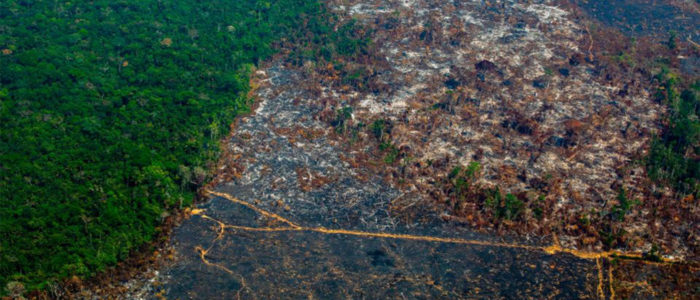From the military perspective, the Operational Environment (OE) refers to a combination of conditions, variables and circumstances that can impact a decision-making process and the ability to employ force capabilities. Roughly, they cover the Diplomatic, Information, Military and Economic (DIME) spheres under which operations are executed.
The spread of COVID-19 has revealed that anyone can become a victim, not just ordinary citizens. As of 24th March, the US Department of Defence alone had 600 cases including several sailors aboard the aircraft carrier USS Theodore Roosevelt. The Indian Army also reported its first positive case leading to a lockdown of the Ladakh Scouts Regimental Centre which specialises in high-altitude warfare in snowy terrain. As of 25th March, three staff members and two contractors at NATO headquarters tested positive for COVID-19.
Disruption of the Warfighting Spectrum
The warfighting spectrum in militaries across the world has been rattled and is likely to remain unstable at least for a year. All conventional, strategic and hybrid plans devised for offence/defence have been disrupted, requiring thorough reviews. For example, the Israel Defence Forces recently reported a visible decline in terrorist activities purportedly sponsored by Iran since the virus took its toll on the country.
The spread of COVID-19 has revealed that anyone can become a victim, not just ordinary citizens.
The question remains, when can such reviews be prompted, given the still uncertain situation? Whether it was planned missile tests, maritime drills, coercive diplomatic campaigns or gray-zone operations, all these will need to consider reduced availability of essential human resources, delayed higher guidance, redirection of funds etc. In essence, the Command & Control (C2) management paradigm in its present form has been directly impacted.
Change in Management Paradigms
Thus far, the C2 model proved effective in managing the complex chains of command and hierarchies layered across multiple organisations. The ‘doers’ or ‘personnel’ were led by higher-level thinkers (read: decision-makers) in a top-down framework which was popular in the industrial era. In the present situation, senior-most commanders are themselves going into isolation. Lt Gen Christopher Cavoli, Commander of US Army Europe went into self-quarantine along with some of his immediate staff upon reported exposure to COVID-19. This has practically led to further preventive measures such as the cancellation of an important US-led military exercise in Africa, a continent where certain Western strategic actors are fighting to counter perceived Chinese expansionism.
How long will command structures sit in a wait-and-watch mode? How will an organisation cope if its leader is unfit or, in a worst case scenario, unavailable for further command responsibilities?
The warfighting spectrum in militaries across the world has been rattled and is likely to remain unstable at least for a year.
It is understood that in such circumstances, the existing senior leadership of military organisations will need to develop fast-tracked promotion policies for mid-ranking officers so they can secure higher-level command responsibilities at the earliest possible. For better or worse, the COVID-19 has compelled restructuring. Those who resist adaptation and improvisation will be swept under the carpet of history. The last thing a country can afford is a blunted command structure.
The heavily centralised command structure will need to be decentralised with greater powers and autonomy for commanders at the lower end of the chain to take bold decisions while ensuring that overall objectives remain intact.
Rising Relevance of Supporting Arms and Services
Specialists in supporting arms and services (Engineering, Signals, Medical, Aviation) who are not part of traditional combat arms (Infantry, Armoured Corps, Artillery, Air Defence) will assume greater relevance on account of their expertise in relief and rehabilitation efforts. In Pakistan, officers belonging to the former category have low retention rates and even lower chances of promotion to higher ranks.
The ratio of personnel in fighting versus supporting arms/services is expected to rise in favour of the latter. At the end of the day, each military componentneeds to ensure its own survival before engaging in conflicts with the adversary.
Integration of Generation Y
The issue of integrating millennials in armed forces has been a subject of debate, mostly in the West. Militaries have been struggling to understand how to incorporate post-Cold War era men and women in their rigid systems while being mindful of their rather non-conformist attitudes and perceptions.
It is generally understood that officers from the Generation Y millennial crop would assume mid-level command responsibilities from 2030 onward. However, COVID-19 seems to have accelerated the dilemma for military institutions to give a greater say to these men and women since they possess the best of both worlds (growing up under the watch of boomers and directly witnessing the global outreach of the World Wide Web).
A shortfall of ICT subject-matter experts will have to be curtailed on war footing by incentivising existing human resources and allocating resources for further recruitment.
The input of Generation Y in military responsiveness to the pandemic is not an option but a necessity to help senior decision-makers navigate in these turbulent times.
Increased Reliance on Cyberspace
The Pakistan Army recently held its first Corps Commanders Conference through video-conferencing. The OE during and after COVID-19 will witness increased reliance on secure cyberspace for communication and operational coordination.
In this scenario, the critical importance of cyber defence and information assurance cannot be emphasised enough. A shortfall of ICT subject-matter experts will have to be curtailed on war footing by incentivising existing human resources and allocating resources for further recruitment.
From Pakistan’s perspective, the situation is even grimmer because despite entering into the second decade of the second millennium, the country does not have any national cyber-related strategy.
